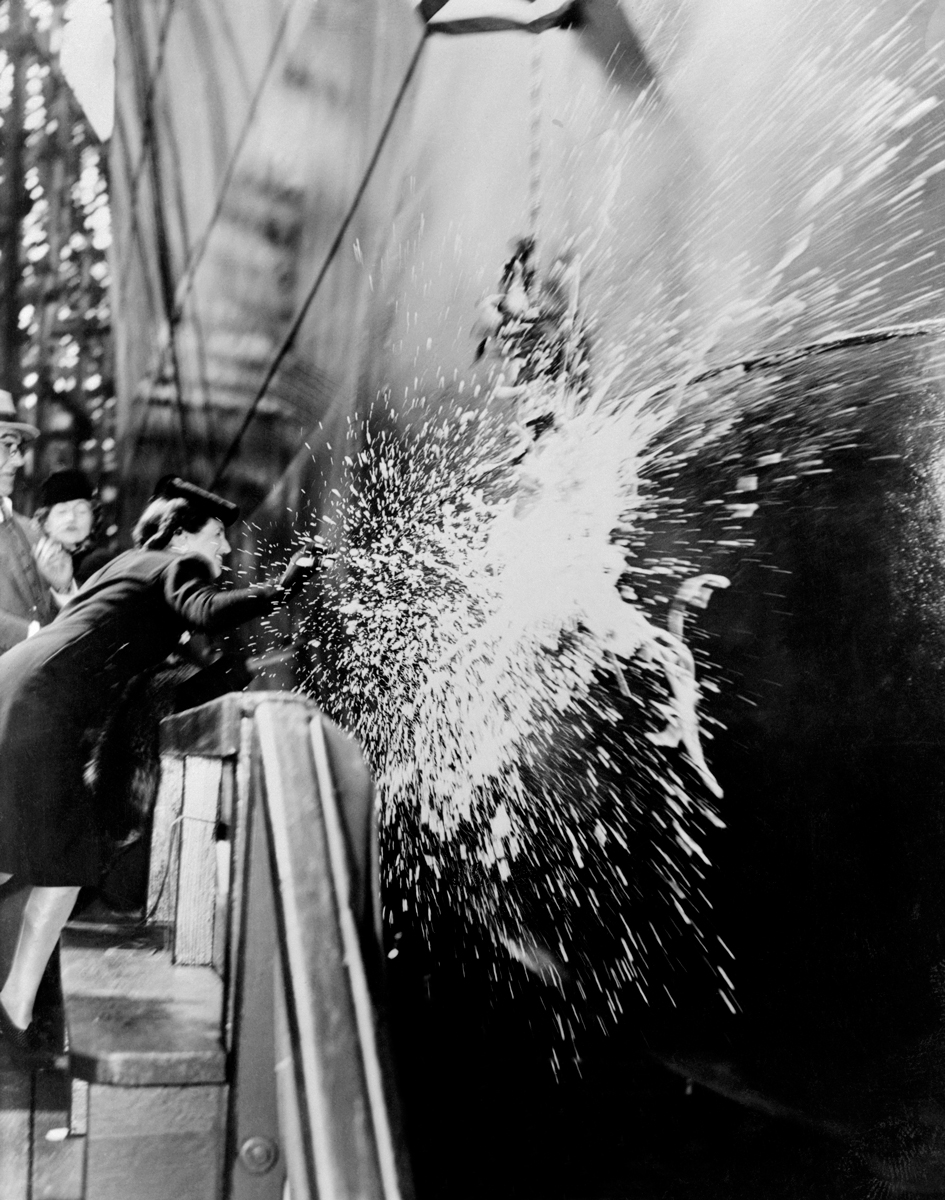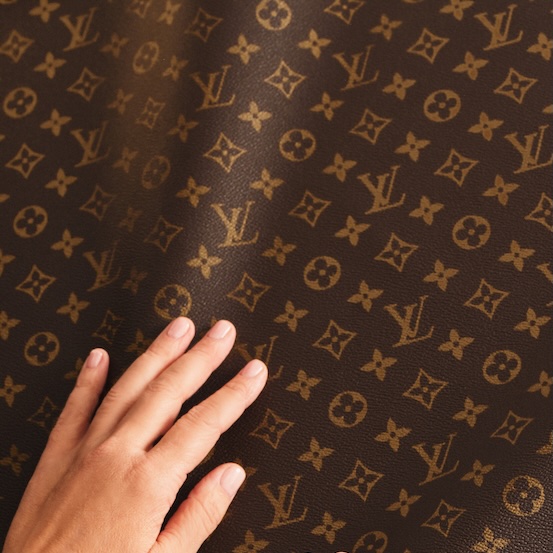Why the hell is champagne a celebration drink? Because it’s expensive. Therefore, we reserve it for special occasions. And why is it so expensive? Because it’s special. Only after we understand that can we understand the rest.
Why the hell is champagne a celebration drink? Because it’s expensive. Therefore, we reserve it for special occasions. And why is it so expensive? Because it’s special. Only after we understand that can we understand the rest.

© Getty Images
© Getty Images
“There isn’t a living soul in a 150km radius”, I was assured. And that was scary. But only the first couple of nights. The following ones, and for almost a month, perhaps the best one of my life, the evenings spent at Okavango Delta were charming. I had given up the idea of making an inventory of the animals I would see during the day a long time ago, on jeep safaris with promontory stopovers to watch the water streams and have a gin and tonic, snacks at sunset with gin and tonic or canoe rides so that, once safe and away from the hypos, I could drink a gin and tonic. There, the night was the one lending us that crushing certainty that we’re tiny. That total darkness beyond these faces illuminated by the fire, above constellations that I had never heard of but common in the Southern Hemisphere, surrounded by the thousand sounds of the savanna, from the far away lion roars and howls of hyenas to the near clacking, too near of that little circle which remains the oldest form of defense known to man, a bonfire. To scare of the chill of the night in the Kalahari Desert and the most ferocious of beasts. With the camp manager, a French bon vivant, my stay was filled with South-African red wine, a few nights of Cabernet Sauvignon, Merlot in some others. “The Portuguese have the best wine in the world”, he said at a certain point. “But the marketing is terrible”. He concluded. I asked if that is what makes the difference in comparison to French wines. “Of course, it is”, he promptly responded, and he added: “Only we could make the world celebrate with white wine. But who would ever prefer a white to a good red? And on top of that, bubbly?” He was, of course, referring to champagne. Until then I had no idea that the famous, noble, and quite expensive product was an issue. For me, it only posed a problem the morning after.
Imagine how life would be like in the Hautvillers Abby in the XVII century. In that Benedictine monastery, the daily order would range from praises to God, with chants and prayers, more earthly tasks like working the fields and caring for cattle, to draft and paint illuminations or even fabricate the support of those manuscripts (whether in paper or parchments) and bind the book they would be a part of, with tanned animal leather. Minus Dom Pierre Pérignon. Him, besides the role of Abby treasurer, rattled by the unjustifiable and excessive spending of the chubby Monsignor in goods that are not to be addressed here and the ones of the Canon in “services” that even less so, had a hobby that reduced stress caused by his “service”: he was a self-taught winemaker. Plus, he had a dream: to create an extraordinary white wine, that managed to dethrone the then very highly regarded wines of Bourgogne, especially the ones from the region of Beaune, made famous due to being the favorites of the French court. And nothing can stop a man with a dream, as you know. At the time, the Portuguese were out there plotting in Vera Cruz, Africa, India and Southeast Asia, our good old Uncle Pierre took it upon himself to make a white wine that would overcome the quality of a red. To complicate things a bit more, he was decided to use only the Pinot Noir variety, making use of the first treat of grapes, meaning, he would avoid the blending of the fruit’s skin, which is what confers the so characteristic Bordeaux coloring to the product (yes, the name of the color comes from the Bordeaux wine).
The monk of the order of Saint Benedict had everything against him. Firstly, the geographic location: the region of Champagne, called that way since the Romans compared it to Campania (Naples), is located in the North of France, on the right side, as if you were going from Paris to Normandie, too close to the winds of the North and even worse, to the ones coming from Belgium, from northeast. What does that mean? It means it’s cold. Which meant the wine fermentation would stop with the arrival of fall and winter, restarting in the spring. This wouldn’t be a problem if the nectar remained in barrels. But that was not what little Pierre wanted, he who thought that many of the properties of his “invention” were lost if it wasn’t swiftly bottled. Thus, the second fermentation occurred inside the then very fragile bottles of wine, that would explode in the cellar thanks to the action of all the carbonic gas. At the time, it was common practice to walk around the cellars with some sort of helmet on and resistant clothing that would offer protection to the shattered glass that could be projected at any given moment. The production was then reduced to the very few bottles that were left. Surprisingly, however, around the year 1700, the wines from Hautvillers Abby were worth around 50% more than the ones from the same region and Dom Pierre Pérignon took care of some improvements. The bottles became much thicker, made from glass that could support the process of the second fermentation, and were closed with cork stoppers imported from Spain, instead of the usual ones made from oil-drenched hemp. They started to be stored in underground cellars, dug in the limestone ground, so that the wine could kept at constant temperatures. It was yet another monk of the same Abby, Dom Ruinart, who discovered the limestone quarries, excavated by the Romans and later forgotten under the city of Reims, which began to be used for that end. Still to this day, there are many galleries, many kilometers long, that are used by the different producers. Some of these crayères (their official denomination) are amazing, such as the ones of Moët et Chandon, with 28km of tunnels where some of the millions of bottles await the conclusion of the fabrication process. And yes, even today there are many liters of product that are lost because of the explosion of bottles or the expelling of the capsule due to the amount of pressure. It is the price to pay for excellency. And we, the consumers, pay good money for it. Why is that?
I am always ready for a harvest. It’s not even for the job itself, but rather for everything around it. I fall more easily for the people and their customs than for chicks, because I’m not getting any younger and am more interested in far less mundane things. There is the continuous treading of the grapes. And the feasting. A few weeks later there is the moment the stalk is taken to be distilled. And then we feast. And only because it’s the season for it, we collect some chestnuts. After two hours in a very uncomfortable squat, back pain, cramps all over and hands filled with little spike injuries, there is enough to cover the bottom of the bag. Now, anytime someone at the supermarket says “5€ a kilo for Chestnuts? They’re so expensive!”, I reply, with the most peaceful look on my face: “Oh yeah? Go pick them yourself then!” Always doubt the excellence of any product that, while demanding a huge amount of labor to harvest, is cheap. When it comes to champagne, and despite the advances conquered by Dom Pierre Pérignon have been determinant to its success, wines continued to be unpleasantly muddy, when what was intended was a clear product. Only almost a century after did Nicole Ponsardin, the widow of François Clicquot (hence the name Veuve Clicquot, meaning, The Clicquot Widow), create two of the processes which determined the champagnois method, also called Traditional or Classic, the most authentic and still used today. We’re talking of the remuage, which consists in the daily rotation of the bottles that, after a year of resting, stored with the bottleneck down, so that the deposit can be removed from the walls of the bottle and make its way to the capsule. Then comes the second process, the dégorgement, which consists in freezing the bottleneck to -25oC, so that when the capsule is removed, the sediments can be expelled by the pressured gas. The lost volume is then substituted by a mix of the same wine with sugar, called Dosage Wine, whose proportions will dictate if the champagne is Brut, Sec or Demi Sec. Only then can it be closed with the characteristic cork and placed to rest horizontally for at least two years, if it’s an ordinary champagne, or at least five for a special harvest. Thus, in comparison to other wine products, it is quite expensive to produce quality champagne. It is also why it is rather expensive to buy. It is a product of undeniable excellence, that follows lengthy (time is money, remember?) ancient process to the last detail.
There are other methods, more modern, such as the Charmat, in which the wine incurs in the second fermentation in inox tanks (instead of inside the bottle itself), then bottled under pressure, a process similar to the one of sodas. Therefore, it can never reach the same quality. Its consumption is rendered as viable only by those who have not yet tasted the real thing. But just like everyone who has ever tried LBV, Ruby and Tawny should have the chance to taste a good Vintage to understand why Port Wine is internationally famous, just like the countless attempt of other wine regions in the entire planet have tried to match its excellence (one should note that champagne has found copies from the United States to Brazil that cannot, according to the AOC, be called any other thing besides “sparkling wine”, even when the same traditional methods are being employed), it would also be just as important that the millésimes, meaning the champagnes that have are branded with a harvest date for being part of exceptional years, are available to the mere mortals. Or the epitome, the Cuvée de Prestige, which are the best that certain producers can offer. They are elaborated with the range Grand Crus and aged for many years. As an example, Dom Pérignon is the Cuvée de Prestige by Moët et Chandon, and the La Grande Dame is the Cuvée de Prestige by Veuve Clicquot. And now that, after having read this article, you can go on to any wine shop for a purchase backed up by some knowledge which might allow for a saffer choice, do yourself a favor before you tchin-tchin: forget the strawberries and caviar and start seriously considering a foie gras. Only then can you open the door to begin to fathom why champagne is used for celebrations.
Translated from the original on Vogue Portugal's Celebrate Yourself issue, published February 2022.Full story and credits on the print issue.
Most popular

O que lhe reservam os astros para a semana de 30 de dezembro a 5 de janeiro
30 Dec 2025
.jpg)
.jpg)
Relacionados


Louis Vuitton: aniversário do icónico Monogram celebra-se com muitas novidades
01 Jan 2026



.jpg)